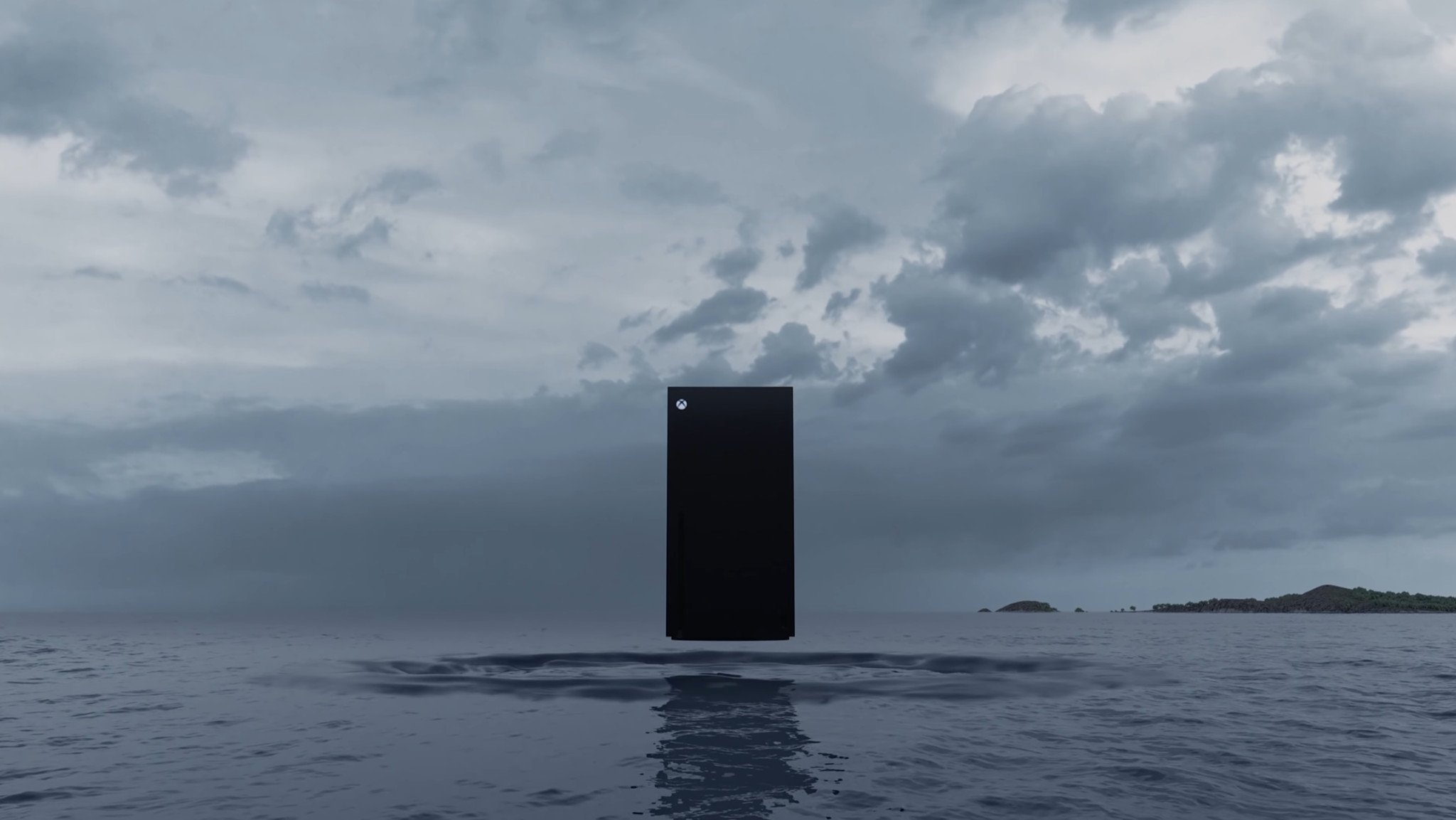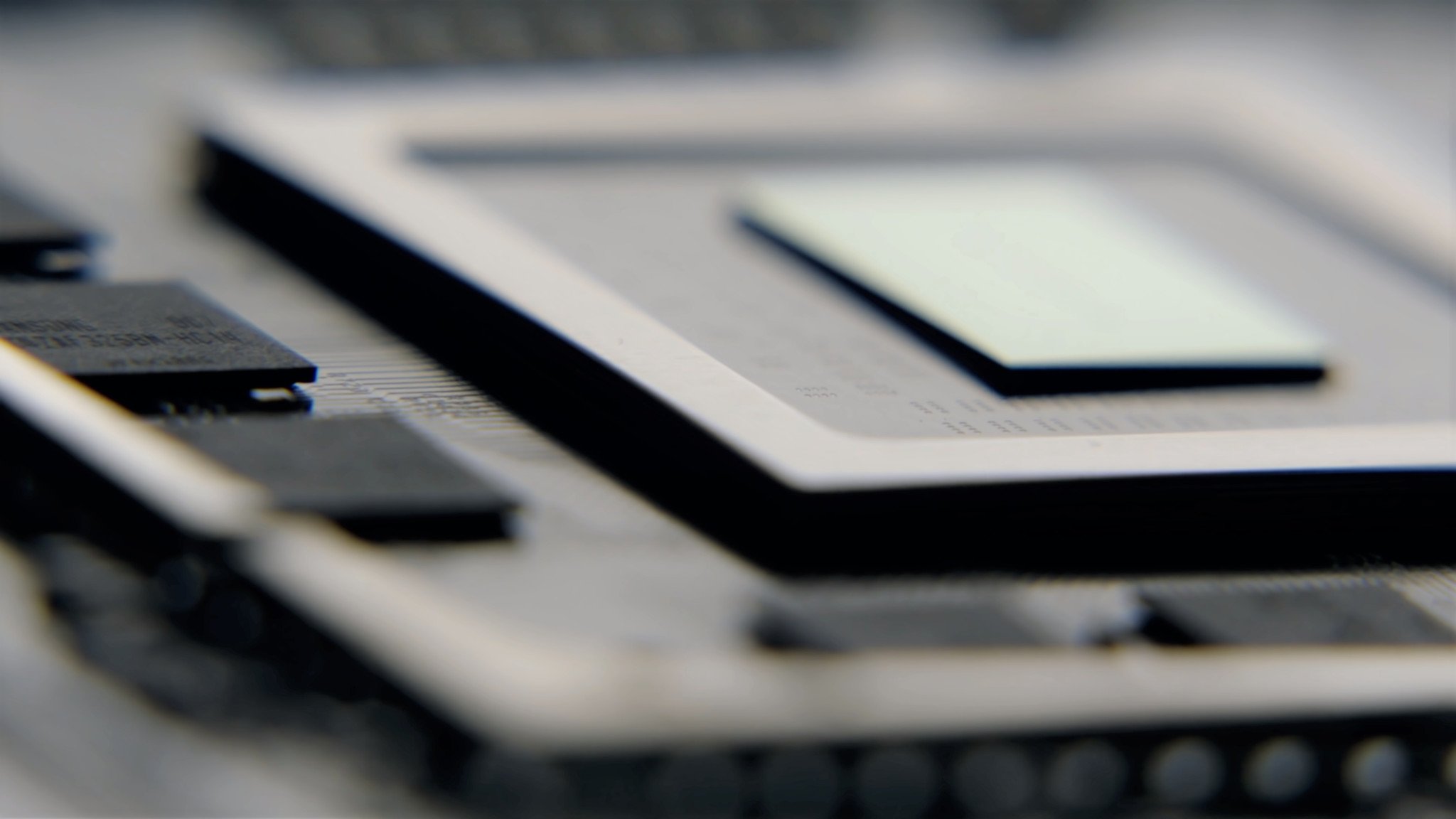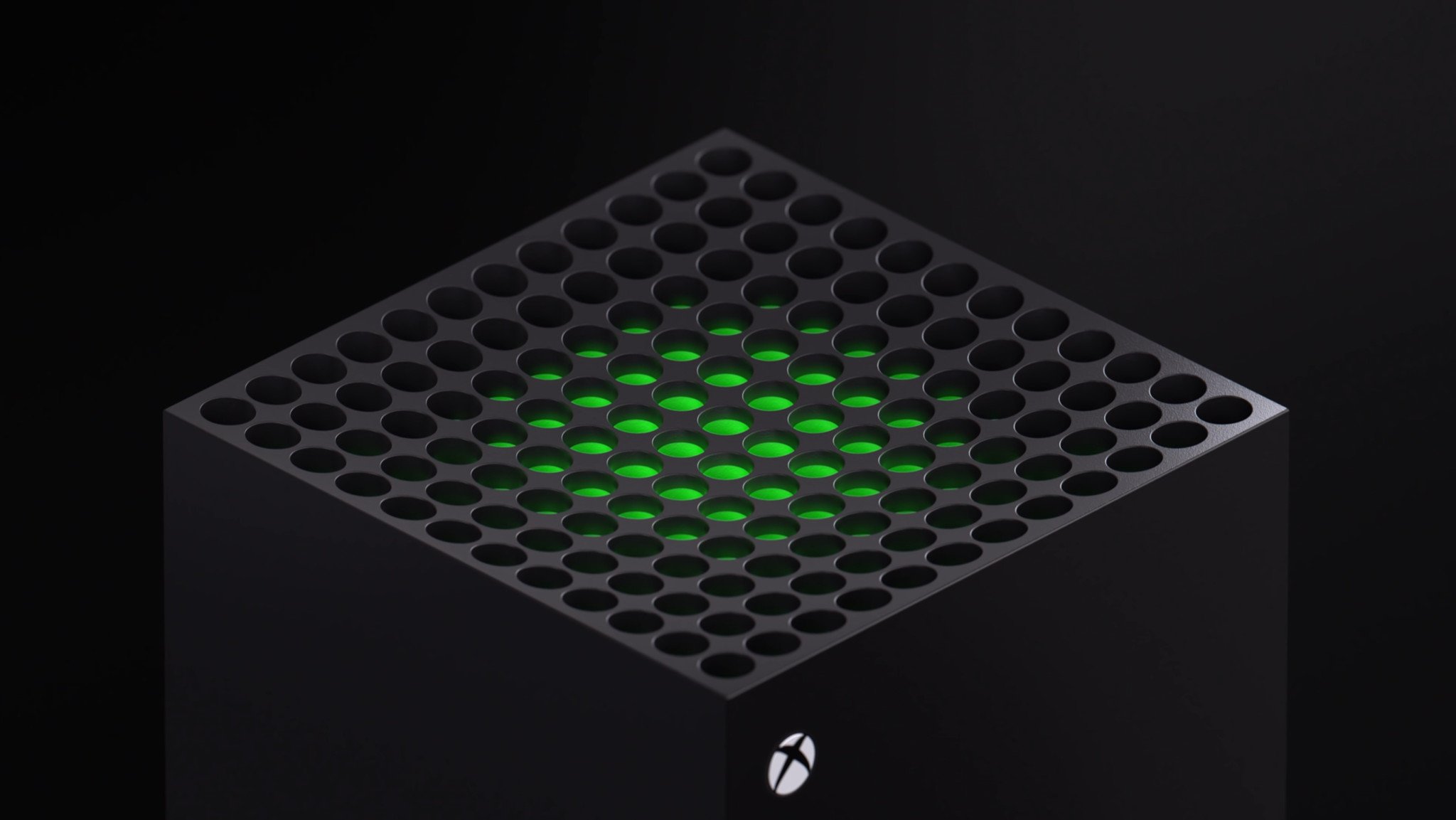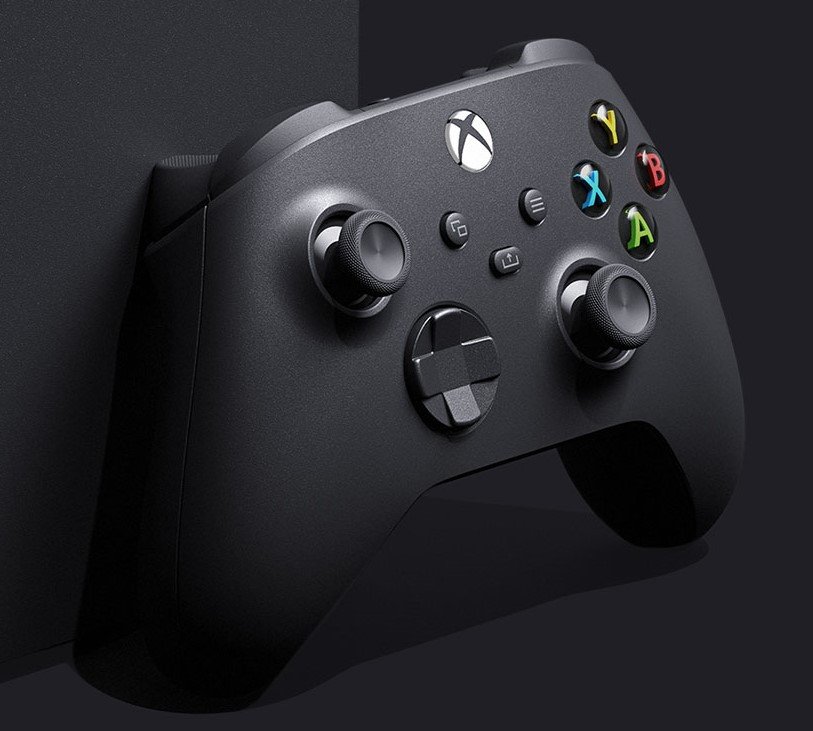Here's everything you need to know about the next-generation Xbox console from Microsoft: Xbox Series X.
The Xbox Series X was unveiled at The Game Awards on December 13, 2019. The beastly, monolithic device represents "Project Scarlett," as a flagship console set to power the next-generation of console games. While official details are still relatively limited, various interviews, rumors, leaks, and trailers help us begin to paint a picture of what next-gen looks like for Xbox fans and Microsoft in general.
Here's everything we know so far about the Xbox Series X.
Xbox Series X
- Power & specs
- Size & dimensions
- New features
- Launch games
- Gamecore & OS
- Price & costs
- Launch date
- And the future
Xbox Series X: Power and specs
The Xbox Series X has now been fully detailed in terms of specs, confirming the majority of our own previous leaks that suggest this is a genuinely beastly system. Ultimately, Microsoft is generalizing the power increase as "four times" higher than the Xbox One X, given that direct comparisons are difficult due to the sheer volume of custom tech going into this system.
Here are the official specs of the Xbox Series X, confirming our earlier leaks from late 2019.
| Category | Xbox Series X |
|---|---|
| Processor | 8x Cores @ 3.8 GHz (3.66 GHz w/ SMT) Custom Zen 2 CPU |
| Graphics | 12 TFLOPS, 52 CUs @ 1.825 GHz Custom RDNA 2 GPU |
| Die Size | 360.45 mm2 |
| Process | 7nm Enhanced |
| Memory | 16 GB GDDR6 w/ 320mb bus |
| Memory Bandwidth | 10 GB @ 560 GB/s, 6GB @ 336 GB/s |
| Internal Storage | 1 TB Custom NVME SSD |
| I/O Throughput | 2.4 GB/s (Raw), 4.8 GB/s (Compressed, with custom hardware decompression block) |
| Expandable Storage | 1 TB Expansion Card (matches internal storage exactly) |
| External Storage | USB 3.2 External HDD Support |
| Optical Drive | 4K UHD Blu-Ray Drive |
| Performance Target | 4K @ 60 FPS, Up to 120 FPS |
| Color | Matte Black |
| Size | 301mm x 151mm x 151mm |
| Stated release date | Holiday 2020 |
| Price | Unknown |
Regarding ports, we got a look at them a little while ago, confirming what we previously heard that Microsoft is dropping the additional HDMI pass-through port, generally used to inject TV and other devices through the system. We've also confirmed with Microsoft now that the IR Blaster and the SPDIF optical audio port are also removed. TV controls will function over HDMI-CEC connections instead, but those of us with SPDIF audio systems or headsets may be out of luck.
In terms of power, the proof will be in how games run once the system ships, but Microsoft's promise of "four times" more powerful than the Xbox One X makes it seem incredibly compelling.
Xbox Series X: Size and dimensions
Just how big is this thing? Microsoft has now released official dimensions, putting it at 301mm x 151mm x 151mm (our previous estimates were out by 9mm, sorry about that!)
Compared to an Xbox One X at 300 mm x 240 mm x 60 mm, the Xbox Series X has a far larger volume, most likely to accommodate airflow and the technology inside it. Microsoft has stated that it built it this way to ensure that it is virtually silent while powering next-gen cutting edge visuals.
We have an interactive 3D size comparison over here you can take a look at.
Xbox Series X 3D interactive size comparison
Xbox Series X: Features and improvements
The Xbox Series X may still have some tricks up its sleeve, but Microsoft has offered a pretty broad picture of its capabilities here and there, and we've gotten plenty of details from our own sourcing.
Microsoft has made comments about improving load speeds and access to your games through the Xbox Series X, and we've heard that, incredibly, the NVMe SSD coupled with some of Microsoft's own proprietary tech makes near-eliminates loading. Games that have loading times of anywhere up to a minute are reduced to mere seconds, with the SSD having anywhere up to 2GB/s read speeds. Microsoft confirmed this with a side-by-side comparison of State of Decay 2's loading times recently.
The Xbox Series X NVMe SSD will also provide developers with more power to use, offloading asset streaming tasks typically handled by the CPU thanks to new features in DirectX, called DirectStorage (which is also coming to Windows PC).
Microsoft is also rumored to be leveraging Project XCloud game streaming to reduce installation times, too, allowing you to jump into your games before they're done installing by letting you stream them. Next-gen is all about saving you time. Microsoft also engineered this thing to be as quiet as possible, and we've heard that even under heavy load, it's virtually silent.
Another benefit of the SSD is that games will be able to save in suspended states, as per a February 2020 podcast with Major Nelson. Right now, Xbox One consoles can only fast resume a single game, but the Xbox Series X will be able to instantly resume multiple games that you've minimized, even after the games have been updated. We've heard that save states persist even if the console is unplugged, and Microsoft has now confirmed a lot of this information in its recent deep dives.
Microsoft is also introducing a new and improved controller with the Series X, with a revised, more tactile d-pad inspired by the Xbox Elite controllers, and a clip and screenshot sharing button, following Sony's lead on PlayStation 4. The new controller is also said to be a little smaller than previous and probably lighter, too, as a result. It also has revised triggers, with grippy textures as standard.
Features like rumble triggers will return, and it'll even work on the previous-gen Xbox One consoles and Windows PCs too. All of your current headsets, controllers, and other Xbox One-compatible accessories will work on the Series X, too. The Xbox Series X will also be able to suspend and resume multiple games at once, as opposed to the single resume available on Xbox One consoles. Microsoft has confirmed that the new controllers will continue to utilize AA batteries.
On the graphics side of things, the Xbox Series X will feature a range of enhancements that elevate it above the current-gen systems. The console is capable of 120 frames per second, complete with variable refresh rates for compatible displays, with support for up to 8K resolutions. 4K resolution with 60 frames per second will be a baseline standard. The Xbox Series X will also feature hardware-accelerated ray tracing, which produces real-time dynamic reflections and shadows, elevating the depth of your games.
Beyond that, Microsoft is also baking in some advanced features developers can leverage to squeeze even more juice out of the system, in the form of proprietary variable-rate shading (VRS), with auto low latency mode (ALLM) and dynamic latency input (DLI), with the goal at making it the "most responsive" console ever built.
We've heard that many of these features will come as part of the new Game Core OS developer environment, and will require the use of the latest versions of DirectX. Many games will be able to scale across systems, between the original Xbox One consoles and the Project Scarlett next-gen consoles. However, to leverage some of the advanced visual features, developers will have to target Game Core OS (also known as Game OS) specifically. We're unsure if Game Core OS will be exclusive to Scarlett consoles, but it seems likely.
As noted earlier, the proof is in the pudding, though. Microsoft has already shown off at least one game that is built from the ground up for these next-gen features, and that is Hellblade II.
Xbox Series X: Launch games and backward compatibility
At The Game Awards, Microsoft showed off a new trailer for Senua's Saga: Hellblade II, which it claims is comprised entirely of in-engine footage. Considering the insane work Ninja Theory did for the original Hellblade in terms of digitizing its performance artists, it's entirely believable that what we see here is genuinely representative of next-gen technology.
Microsoft has invested more than ever in first-party content moving into next-gen, not just because of the Project Scarlett consoles, but also for Project XCloud, it's nascent streaming service. Both platforms use the same developer environments, ensuring this Xbox iteration could have the largest install base ever, leading to more developer support than ever.
In July, Microsoft revealed a range of impressive-looking games coming to Xbox Series X, including Halo Infinite with a free to play multiplayer component, with 120 frames per second gameplay. Avowed, which looks like Obsidian's answer to Elder Scrolls V: Skyrim, and State of Decay 3. Finally, Microsoft finally revealed the long-rumored Fable from Playground Games. Microsoft also confirmed that 50 games existing and future will launch with Xbox Series X enhancements, from increased resolution, frame rates, and beyond.
Microsoft has also confirmed that every single game that runs on Xbox One will work on the Xbox Series X, including OG Xbox games and Xbox 360 games that are backward compatible. As for launch titles and beyond, Xbox Game Studios are hard at work on piles of games, and we've rounded them all up over here for your perusal. We also have a list of games confirmed to be Xbox Series X "optimized," although exact optimizations will vary.
Xbox Series X: GameCore and OS
Microsoft will deploy the same OS to Xbox Series X that is available now on the Xbox One S and Xbox One X, albeit with some design refinements you can see a glimpse of in the above video, showcasing the new Fluent Design Xbox dashboard. New fluent elements, new fonts, and a dashboard designed to support 4K TVs are among things being considered for dashboard improvements in the future.
For developers, Microsoft is working on a new developer environment dubbed GameCore, which will reportedly bring Xbox development more closely in-line to that of Win32 on PC. Additionally, GameCore comes with other benefits for developers, allowing games to scale more seamlessly across different Xbox SKUs without additional work, scaling resolution, and other details to meet different power levels. This sort of system is ideal for the rumored Xbox One S Lockhart console, which has yet to break cover. We've heard that GameCore as a development environment is currently in a beta state, which a couple of smaller games planning to launch using early versions of the tools around the Xbox Series X launch.
Xbox Series X: Price and costs
Nothing is yet known about the cost of Xbox Series X, but we don't expect it to be cheap. The Xbox One X launched at $499 in 2017, and Microsoft would be breaking the mold if it went to say $599, but we live in a world where Apple can sell a $1000+ iPhone without controversy. I would suspect Microsoft wants it to be around $499, but we simply don't know. Fan expectations seem to put it in the $499 range, based on my poll below.
How much will the next-gen Xbox Series X cost?
— Jezland 3 ☢ (@JezCorden) December 13, 2019
Microsoft has been expanding its Xbox financing program, Xbox All Access, and we expect that if the Series X is more expensive than usual, Microsoft will leverage financing options to try to help people manage costs. We've also received extremely credible information that the Xbox Series X, is indeed, part of a series of consoles, and will be accompanied by a less-powerful, cheaper version currently codenamed "Lockhart."
Xbox Series X: Launch date and preorders
We currently expect Microsoft will announce launch details sometime in August, with some current estimates suggesting November 2020 as a possible launch month.
The Xbox Series X will launch in "Holiday 2020," according to Microsoft. Previous Xbox consoles have typically launched in November, so we can realistically expect to see it around there, but we've heard some previous reports that it could even launch earlier. Either way, preorders will likely go live before the summer of 2020.
Xbox Series X: It eats monsters for breakfast
The Xbox Series X represents a bold vision and a huge step forward for Redmond, which is keen to put the mistakes of the early Xbox One generation behind it. New name, new vision, new leadership, and more investment than ever before as Microsoft seeks to stave off potential cloud threats from Google, Amazon, and Tencent.
Far more than a simple box, the Xbox Series X should grant visual quality that has up until now, been available only on the most extreme Windows gaming PCs, while incorporating the entirety of your existing library. It will also allow us to roam with our games via the internet, thanks to Project XCloud and Xbox Game Streaming, streamed to our mobile devices.
Microsoft has never put this much investment into its gaming operation before, and I don't doubt Xbox fans will be delighted with what Redmond puts out with the Xbox Series X. Whether or not the broader market responds remains to be seen, but Microsoft is undoubtedly giving Xbox its best chance possible.








0 comments:
Post a Comment